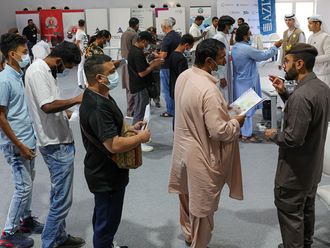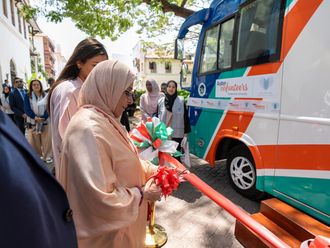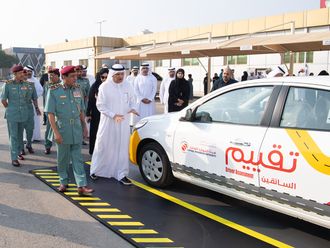Abu Dhabi: The Abu Dhabi Urban Planning Council (UPC), the agency responsible for the future of Abu Dhabi's urban environment, on Saturday unveiled new street design standards.
They accord with the guiding principles of Capital 2030, which call for safer, more comfortable and aesthetic street environments across the emirate.
The Urban Street Design Manual is based on key design principles, including safety for all street users and the acknowledgement that all great street designs begin with pedestrians and ensure universal access and environmental sustainability.
The Urban Street Design Manual will be showcased on an interactive display at Cityscape Abu Dhabi 2010 to be held from April 18 to 21 at Abu Dhabi National Exhibition Centre.
It will complement the multi-modal transit infrastructure aspect of Capital 2030 that aims to introduce key lifestyle enhancements for the residents of Abu Dhabi.
Similar lifestyle enhancement themes will also be applicable to waterfront, mixed use and community development, sporting venues, natural environment, revitalisation strategies and cultural heritage aspects of UPC's other key urban development projects.
"Our new urban street design manual aspires to establish Abu Dhabi as a model for global mobility underpinned by diversity in movement options, flexibility in destination access, efficiency in time saving and enhancement of liveability," said Falah Mohammed Al Ahbabi, General Manager, Abu Dhabi Urban Planning Council.
With the introduction of the Urban Street Design Manual, the UPC aims to reduce the Emirate's reliance on personal motorised vehicles by implementing a network of public transit to include high speed rail and rapid transit options such as trams and buses.
Furthermore, a system of new streets and redesigned streets will emphasise high quality urban design and cater to all modes of transport, making Abu Dhabi a better and safer place to walk, cycle, and take public transport.
The innovative street designs will provide genuine choice of movement by walking, cycling and public transport modes as well as in private motor vehicles.
Abu Dhabi residents and visitors will start witnessing the transformation as early as 2010 when a City Centre street will be reconstructed according to the design standards.
The newly unveiled manual will serve as an effective guide for designers that will help them create street designs that embody the principles of Vision 2030.
The Urban Street Design Manual will apply to all streets in the emirate, including those parts scheduled for urbanisation by 2030. Freeways and rural arterial roads are not intended to be covered by the manual.
The Urban Street Design Manual pays particular attention to streetscapes and gives designers the tools to ensure that all of the elements that make up the area between the curb and building fronts are in the right place and are the right size for the context.
Unobstructed pedestrian walkways are required and the proper placement of street lights, traffic sign poles, utility boxes, benches and plantings will now be mandatory for designers of new or redesigned streets.
Following the guidance of the manual for designing new streets and retrofitting existing ones will ensure that streets are designed appropriately for their surroundings.
For instance, streets that are lined with popular retail shops like Hamdan Street in Abu Dhabi or Khalifa Street in Al Ain will feature wider sidewalks with more shade, buffering of sidewalks from traffic lanes, and possibilities for sidewalk cafes and street trees.
Similarly, streets that serve lower density residential neighbourhoods will be designed for low traffic speed with safe pedestrian crossings to encourage walking to local services and to provide quiet environments for families.
The first application of the manual is underway with a redesign of Khalifa Street in the Abu Dhabi city centre set for commencement of construction this year.











